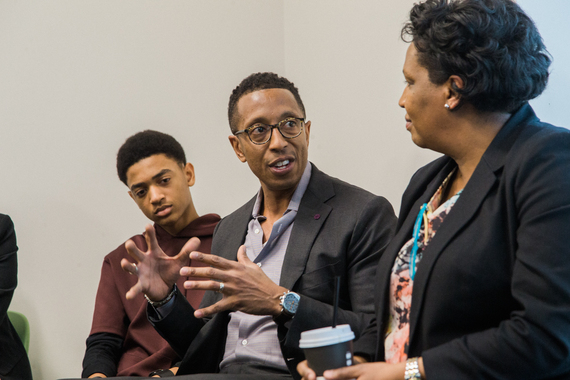In conversations about education in the United States, the word "equity" seems to be everywhere. And the central question around which equity revolves--whether every student is receiving what they need to succeed in the classroom and beyond--is nearly as old as the country itself. President John Adams is quoted as saying as early as 1785 that, "The whole people must take upon themselves the education of the whole people and be willing to bear the expenses of it."
But what we mean by the word "equity" today has expanded in ways the Founding Fathers could hardly have imagined. Two years ago marked both the 60th anniversary of the Brown v. Board ruling that integrated public schools, and the year that students of color became the majority in U.S. public schools. At the same time, despite advances that seemed unthinkable just a few generations ago, too many students are simply not equipped with the tools they need to succeed in a rapidly changing, global society.
Over the last few years, we've seen promising improvements in the national graduation rate, but only 40% of students are college-ready when they graduate. And only 12 percent of black students and 25 percent of Hispanic students are prepared to succeed in college. (ACT data 2015) This is our country, these are our students, and this is our shared future. So what can we do?
At the Bill & Melinda Gates Foundation, we believe some of the crucial elements to a quality education for every student include: access to great teachers who deliver high-quality instruction; high expectations and challenging coursework; and approaches to personalized learning that allow a more tailored approach for students so we can meet their individual learning needs and build on their strengths.
We just as firmly believe that one of the most important things we can do to ensure a quality education for every student is to listen to the voices of parents. This is particularly important when it comes to the parents of low-income and minority students who have historically been left out of the conversation about how to best educate our students.
So it's especially gratifying to see our views intersect with those of parents of color, as seen in the recent New Education Majority national poll done by our partners at the Leadership Conference Education Fund.

It showed that Both African Americans (51%) and Latinos (50%) overwhelmingly cite "good teachers" as the most important quality of a great school in an open-ended question. When asked to prioritize specific characteristics in a school, teacher quality was joined at the top of the list by other fundamentally important features, such as having the right teaching materials, ensuring students leave school prepared, and safety.
Parents also share our belief in high expectations for every student; 90 percent of African Americans and 84 percent of Latino caregivers say their students should be challenged more in school to ensure that they are successful in life. A similarly high proportion of parents (90%) believe that low-income students of color should be held to the same or higher expectations because a good education is the best path out of poverty.
Lastly, parents recognized the importance of consistent measures that tell them how their kids are doing. Seventy-one percent of African Americans and 70 percent of Latinos said the use of yearly testing to help parents and teachers know how well children are doing was an important characteristic to have in a great school.
Our education work at the foundation is built on the premise that education should be a bridge to greater opportunity, and one that's just as available, accessible, and practical for students of color and students from low-income communities as it is to anyone else. We'll get one step closer to this if we continue to engage all parents, especially those whose voices have traditionally been stifled.
